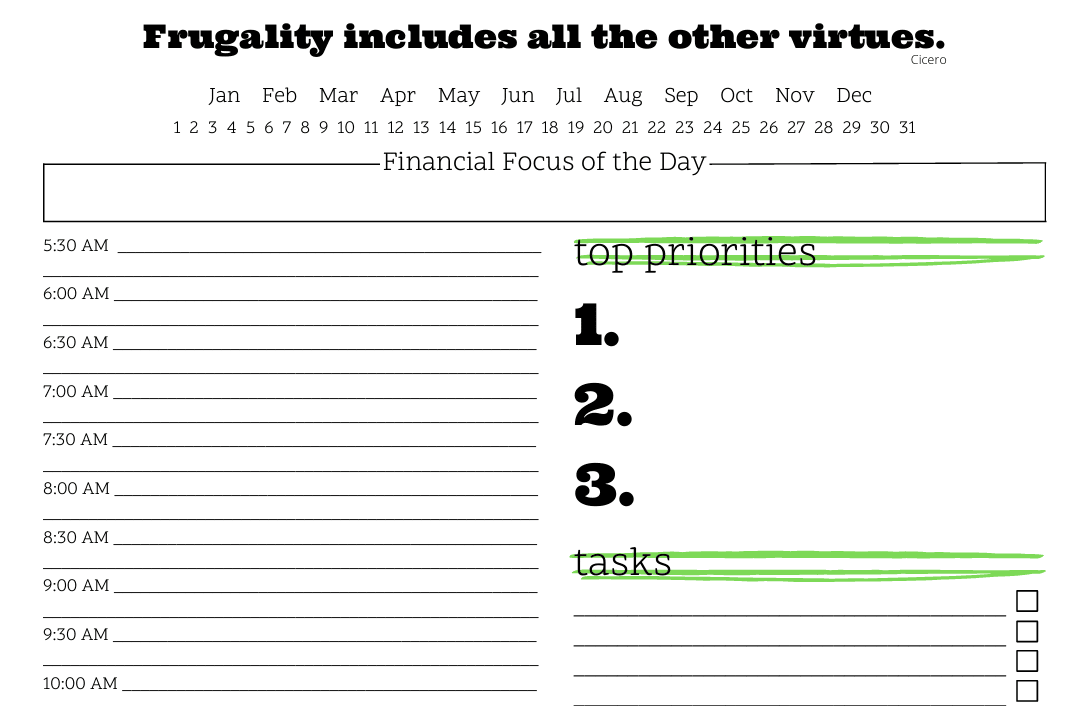This article may contain references to products or services from one or more of our advertisers or partners. We may receive compensation when you click on links to those products or services. Nonetheless, our opinions are our own.
The information presented in this article is accurate to the best of our knowledge at the time of publication. However, information is subject to change, and no guarantees are made about the continued accuracy or completeness of this content after its publication date.
- Introduction
- Zero-Based Budgeting
- Zero-Based Budgeting vs. Traditional Methods
- Reasons Organizations Use Zero-Based Budgeting
- Who Benefits Most from Zero-Based Budgeting
- Ideal Scenarios for Zero-Based Budgeting
- Required Zero-Based Budgeting Resources
- How to Make a Zero-Based Budget
- Advantages of Zero-Based Budgeting
- Problems with Zero-Based Budgeting
- Real-World Applications
- Common Misconceptions
- Comparing Zero-Based and Incremental Budgeting
- Closing Remarks
- Frequently Asked Questions
- Recommended Reads
Introduction
Zero-based budgeting (ZBB) is a budgeting approach where each expense must be justified and approved for every new cycle, rather than relying on previous budgets. This method requires detailed scrutiny of all costs and promotes more efficient money management. It helps businesses and individuals reduce unnecessary expenses and maintain closer control over their finances. To decide if zero-based budgeting suits your needs, it is important to understand both its benefits and potential drawbacks before implementation.
Zero-Based Budgeting
Zero-based budgeting starts with zero approved expenses each period. Every cost must be justified from the beginning instead of adjusting last year’s numbers incrementally. This approach encourages organizations to evaluate spending based on current goals and priorities, promoting more strategic financial decisions. No funds are allocated without clear reasons, which helps eliminate wasteful expenses and better aligns budgets with organizational objectives. Compared to incremental budgeting, zero-based budgeting fosters a fresh perspective on resource allocation and cost control.
Zero-Based Budgeting vs. Traditional Methods
Unlike traditional budgeting that adjusts prior budgets with small changes, zero-based budgeting requires managers to justify each expense annually. Costs are not automatically carried forward without evaluation. This method ensures budgets reflect current priorities, removing outdated or unnecessary expenditures. As Peter Pyhrr, the pioneer of ZBB, stated, “Zero-based budgeting matches spending to business goals, not what was spent before.” This fundamental difference drives more deliberate and flexible budget planning.
Reasons Organizations Use Zero-Based Budgeting
Organizations adopt zero-based budgeting to better align spending with strategic goals, reduce costs, and break free from entrenched spending habits. It is especially useful during major organizational changes such as mergers, acquisitions, or market shifts. By building the budget from zero, companies can redirect resources toward initiatives that add the most value, improving efficiency and customer outcomes. This method supports adaptive financial planning suited to dynamic business environments.
Who Benefits Most from Zero-Based Budgeting
Zero-based budgeting is effective for:
- Small businesses with limited resources require strict cost control.
- Large enterprises need transparency across multiple departments.
- Individuals who want to allocate every dollar purposefully.
- Nonprofit organizations aim to align spending with mission goals.
Small companies use ZBB to adapt to fluctuating monthly costs, while larger firms leverage it to eliminate waste and ensure consistent budgeting practices. Individuals can use it to accelerate debt repayment and increase savings. Nonprofits benefit by demonstrating how each expense supports their objectives.
Ideal Scenarios for Zero-Based Budgeting
Zero-based budgeting works best in situations such as:
- Organizational transformations, like mergers or new leadership.
- Economic uncertainty requires cost reduction.
- Launching new products or entering new markets demands resource reallocation.
- Variable costs or shifting priorities require flexible budget adjustments.
Starting from zero in these contexts ensures spending matches current necessities and supports strategic goals for the future.
Voted "Best Overall Budgeting App" by Forbes and WSJ
Monarch Money helps you budget, track spending, set goals, and plan your financial future—all in one app.
Get 50% OFF your first year with code MONARCHVIP
Required Zero-Based Budgeting Resources
Effective zero-based budgeting depends on:
- Comprehensive data to analyze all costs accurately.
- Real-time cost tracking tools.
- Cloud platforms to consolidate departmental budgets.
- Scenario planning software to evaluate different funding options.
- Cross-functional teams from finance, operations, sales, HR, and IT.
Strong leadership and collaboration across teams foster accountability and help maintain focus. As Deloitte highlights, “Successful zero-based budgeting depends on cross-department ownership and engagement.”
How to Make a Zero-Based Budget
Define Financial Objectives and Priorities
Establish clear goals aligned with organizational strategy. Allocate resources to areas that deliver the greatest impact.
Identify Cost Centers and Breakdown Expenses
Catalog fixed and variable costs for each department. Review past spending to uncover opportunities for savings.
Justify Every Expense
Require documented explanations for each requested cost to ensure alignment with current priorities.
Assign Ownership and Promote Collaboration
Hold department heads accountable for their budgets. Encourage cross-team efforts to identify efficiencies.
Review and Adjust Regularly
Monitor budget performance continuously and update as circumstances change to maintain control and relevance.
Advantages of Zero-Based Budgeting
Improved Financial Control and Cost Management
Eliminates unnecessary expenditures and directs funds toward priorities. Ernst & Young reports that 45% of clients using ZBB reduced costs by 10%–20%.
Increased Accountability
Managers must justify spending, fostering responsible decision-making.
Elimination of Legacy Costs
Removes outdated expenses, freeing capital for innovation and growth.
Problems with Zero-Based Budgeting
Time-Consuming
The detailed review of every cost increases the budgeting effort.
Complexity in Large Organizations
Coordinating multiple departments without effective communication can slow progress.
Risk of Short-Term Focus
Emphasis on immediate savings might undermine long-term investments needed for growth.
Real-World Applications
Companies such as Texas Instruments, Kraft Heinz, and Walgreens have successfully applied zero-based budgeting to reduce costs and prioritize strategic spending. Small businesses also find ZBB valuable for identifying waste and optimizing limited resources.
Common Misconceptions
Myth: Zero-Based Budgeting is only for large companies.
Reality: Small businesses and individuals benefit significantly from ZBB principles.
Myth: It is too rigid and inflexible.
Reality: Budgets can be adapted to changing needs, maintaining flexibility.
Comparing Zero-Based and Incremental Budgeting
| Aspect | Zero-Based Budgeting | Incremental Budgeting |
|---|---|---|
| Budget Base | Starts from zero every cycle | Adjusts the previous year’s budget with changes |
| Cost Justification | Requires justification for every expense | Only justifies changes, not all costs |
| Time and Effort | More time-consuming and detailed | Less time-intensive |
| Focus | Aligns spending with current priorities | Maintains status quo, with minor updates |
Closing Remarks
Zero-based budgeting offers a comprehensive way to manage costs by requiring justification for all expenses and aligning spending with current objectives. Although it requires more time and collaboration than traditional methods, the potential benefits include improved financial discipline, cost savings, and strategic resource allocation. Understanding both its strengths and challenges allows organizations, small businesses, and individuals to decide when this budgeting approach best fits their needs.
Frequently Asked Questions
What are the biggest challenges of zero-based budgeting?
People often resist change, and the detailed review process demands significant time. Lack of adequate training can also hinder smooth implementation, slowing down progress.
How does zero-based budgeting improve cost management?
By requiring detailed justification for each expense, it ensures money is spent only on priorities that align with organizational goals.
Who should participate in zero-based budgeting?
Department heads, finance teams, and operational staff should collaborate closely to ensure thorough budgeting and accountability.
Are there common misunderstandings about zero-based budgeting?
Yes, many believe it is only suited for large companies or is too inflexible. In reality, it can be adapted for organizations of all sizes and is flexible enough to accommodate evolving needs.

Reviewed and edited by Albert Fang.
See a typo or want to suggest an edit/revision to the content? Use the contact us form to provide feedback.
At FangWallet, we value editorial integrity and open collaboration in curating quality content for readers to enjoy. Much appreciated for the assist.
Did you like our article and find it insightful? We encourage sharing the article link with family and friends to benefit as well - better yet, sharing on social media. Thank you for the support! 🍉
Article Title: Advantages and Disadvantages of Zero-Based Budgeting
https://fangwallet.com/2025/10/04/advantages-and-disadvantages-of-zero-based-budgeting/The FangWallet Promise
FangWallet is an editorially independent resource - founded on breaking down challenging financial concepts for anyone to understand since 2014. While we adhere to editorial integrity, note that this post may contain references to products from our partners.
The FangWallet promise is always to have your best interest in mind and be transparent and honest about the financial picture.
Become an Insider

Subscribe to get a free daily budget planner printable to help get your money on track!
Make passive money the right way. No spam.
Editorial Disclaimer: The editorial content on this page is not provided by any of the companies mentioned. The opinions expressed here are the author's alone.
The content of this website is for informational purposes only and does not represent investment advice, or an offer or solicitation to buy or sell any security, investment, or product. Investors are encouraged to do their own due diligence, and, if necessary, consult professional advising before making any investment decisions. Investing involves a high degree of risk, and financial losses may occur including the potential loss of principal.
Source Citation References:
+ Inspo
There are no additional citations or references to note for this article at this time.












































